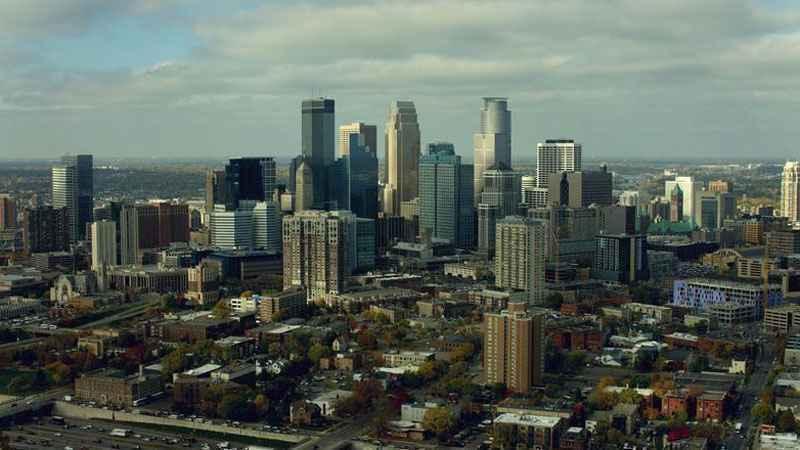Increasing amount of office spaces going unused in Minneapolis, St. Paul
[anvplayer video=”5001713″ station=”998122″]
An increasing amount of office space is going unused in both Minneapolis and St. Paul, according a new report.
Newmark, a global commercial real estate advisory firm, released data for the fourth quarter of 2020, showing office space in the Twin Cities market rising to 11.9% vacancy. That is an increase from 11.2% one year ago.
"It’s a ghost town. I don’t see anyone out and about anymore," said Cody Thompson, who lives in Minneapolis.
"It’s bad. It’s really bad," added Shayla Olasande, who worked at a sandwich shop in downtown Minneapolis until the pandemic forced it to close. "We don’t have our customers, our people who support our businesses aren’t down here."
The Minneapolis Downtown Council tracks ‘reanimation’ metrics to evaluate how the downtown area is being impacted by COVID-19. The latest report for January shows 11.7% hotel occupancy, 37% light rail ridership, 18.7% seated diners in restaurants compared to one year ago and 15.6% office occupancy.

[KSTP]
"I think ‘ripple effect’ is exactly the right word to use because the 218,000 people that came to work every day before COVID really was a customer base for restaurants and retailers," said Steve Cramer, president and CEO of Minneapolis Downtown Council. "That whole economic system has been disrupted over the last year."
Joe Spencer, president of the St. Paul Downtown Alliance, added, "We’re going to have cultural adjustments that come out of this, but I absolutely believe downtowns are going to be critical to our life and our culture and our commerce. So when it’s safe, we’ll be back."
5 EYEWITNESS News asked both Cramer and Spencer when Minnesotans can expect downtown areas to return to their pre-pandemic activity levels, based on what they are hearing from large employers and commerce partners
"Post-July 4th, going into the late summer, that’s when I think we’re going to begin to see downtown begin to come back to life," Cramer said.
Spencer added, "We’ll probably come back in waves. As we look at the year ahead, we don’t exactly know how the vaccine’s going to rollout, how the year’s going to unfold, but sometime this year we’re expecting were going to start to come back. People like coming together and if you look at the growth in cities and core downtowns over the last few decades, all of the reasons for that growth are still going to be with us when we’re through the pandemic."